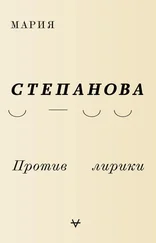It wasn’t that they went into a new age utterly unaware of the discipline of history: there are plenty of examples in the texts and missives circulating around medieval Europe showing that the dates and markers of an unwritten history were well within the field of vision for Jewish scholars. They noticed these events, but nothing had the necessary magnitude to become part of the holy tradition. All the major events were long behind them as they’d happened at the very beginning. In a world dominated by precedent, when the destruction of the First and Second Temple was one single event, and the difference between Babylon and Rome was insignificant in the face of perpetual catastrophe, all the assaults and pogroms of the new wave of persecution (in France, Germany, and Spain) were simply continuations on a theme. The epitome of this approach to the past is Megillat Ta’anit (the scroll of fasting), which also sets out the red letter days in the calendar, the days for feasting, rather than mourning and fasting. These were the dates of feats and celebrations, recorded from pre-Maccabean times and up to the destruction of the Second Temple. A Scholion or commentary gives the dates of events separately. The scroll is not an effort to make history, but has a very different task: structured around the turning of the seasons it lists the days and months and not the years. In a later incarnation it becomes the Christian liturgical year. In the Jewish tradition there is no difference between the recent and far past, just as there is no difference between past and present.
In this way the Judaic memory is free from the need to commit everything in history to memory, free to choose the significant and essential, to cut away the inessential. The limitations were of a different kind; the imperative not to forget fitted well with the duty to focus — on one’s own history among other things — when multifarious details threatened to overwhelm the fundamental truths. Jewish historiography (which barely existed before the Enlightenment and which suddenly blossomed in conditions of assimilation, departing from tradition for the simple reason that there was no real tradition; even the first persuasive history of the Jewish people was written by a gentile) seemed an unnecessary science; everything one needed to know was stored on a different shelf. Yerushalmi quotes Franz Rosenzweig’s Star of Redemption , in which Rosenzweig maintained that the meaning of Jewishness lies in its ahistoricity: the Jewish people stood outside the general current of time and had even achieved a desired stasis through their observance of an unchanging law. Rosenzweig’s work was published in 1921. Twenty years later the current once again washed against their shore. History claimed its own.
Even the Nazi imagination worked as if from inside the logic of the Jewish world, as if they desperately wanted to confirm or deny a thesis, to test the strength of the contract the Jewish people had with their God. Acts of punishment were meted out in accordance with their foreign calendar, although without discerning between days of mourning and days of feasting. The massacre of Jews at Babi Yar took place on Erev Yom Kippur and the destruction of the Minsk Ghetto was timed to coincide with Simchat Torah. The clearing of the Warsaw Ghetto began at Passover. Even such violent plungings into the black hole of catastrophic knowledge can be considered a sort of confirmation. The impossibility of forgetting searches out its own markers, its own mounds, familiar stones, or ravines and refuses to be comforted for its children, for they were not . Yerushalmi’s Zakhor is a book about memory as the highest of all the virtues, and yet it ends with a near prayer for oblivion: that it might cease to be a sin, that all the rips and tears might be left in peace, to be themselves, untroubled.
Obverse:
Dybbuk means “cleaving to” or “clinging to”; the description often involves the sense of grafting, like a gardener experimenting by splicing a pear shoot to an apple tree, or a briar rose to a garden rose. The restless soul of Ashkenazi legend cannot be parted from this world, either because the weight of sin is too heavy upon it, or it has simply got stuck staring at something living, and can no longer trace the way home. A soul whose death was terrible or shameful, or who won’t be divested of earthly joys, wanders from door to door looking for a crack to force themselves through, a person who can be inhabited like a tidy, well-swept house. It might be an old man, weakened by illness and no longer able to pinch tight the corners of his own body, or a woman tormented by waiting, or a person whose own soul is not stationary, but wanders back and forth like a pendulum. Clinging to this person, the dybbuk worms his way in, puts down roots — this home is warm and raw. Ten men wearing burial shrouds and blowing on a shofar (ram’s horn) must beg the evil spirit to leave the body, but are not always successful in talking it round. It cries pitifully and begs its tormentors in many different voices, calling them by their names and listing the sins they have until now kept private, and their birthmarks and their childhood nicknames…
This is just like the past when it won’t leave. It cleaves to the present, burrows under its skin, leaving its spores there and talking in tongues and ringing its bells, so there is no greater joy for a person than listening and remembering what has never happened to him, crying for those he never knew, calling by name those he never saw.
Reverse:
I once read a book on the ghosts of birds that described the relationship between an Indigenous tribe and its dead ancestors. It was laid out very precisely, like diplomatic protocol, and based on a complicated system of agreements and indulgences. Its descriptions of protocol included chance meetings — that awkward moment when you walk into a dead person on a dark road, like a pillar of icy air. I’d like to quote from the book but I can’t — I picked it up and read from it in an overseas bookshop, and I’m afraid I will misremember the text. In many ways this resembles my negotiations with the past, which are based on hard facts, like the hard cover of a book, but I have to resurrect them from thin air and resign myself to the inevitable inaccuracies: in the same way they draw the image of a bird from just its claw or its feather, once it has become a shade.
It’s no secret that the people of the past are easily and quickly transformed into something unrecognizable and often nonhuman. In “The Arm,” a short story by Ludmilla Petrushevskaya, a dead pilot drags a burnt log from his cockpit with the words: “This is my navigator.” This fictional account has its nonfictional doppelgänger in a dream the prose writer Vsevolod Ivanov had just before his death. He dreamed that he was with Anna Akhmatova at a World Congress of Writers, in Greece of all places (at the time it was easier for a citizen of the USSR to cross the Lethe than an international border). This fantastical trip, the dream of a Soviet writer in hospital in the summer of 1963, had a distinctly paradisiacal nature. “In the morning I went downstairs and I saw a woman sitting at the table and weeping. Anna Andreevna, I said to her, Anna, why are you crying? And she answered that she had seen her son in the table, only her son was pink, and the table was black marble.”
The records of dreams are inaccurate in an unintentional way: did the oneiric Akhmatova see the face of her son (who was brought up by strangers a long way away from her, arrested, rearrested, and rendered unrecognizable by labor camps) in the polished marble surface? Or was the table actually her child in the dream, like the burned log of the navigator: a four-legged marble child, black instead of pink, her little Lev, found by her in the unattainable and paradisiacal Greece? Her table son, upon whom the dead are laid out to be dressed for the grave, like the rock where Jesus was laid to be washed and anointed. In “Requiem,” Akhmatova compares her still-living son with the crucified Christ, and her suffering with the suffering of the Mother of God. Years later he returned from the camps and was rearrested, as if these passages into the world of the dead and back again were quite normal.
Читать дальше











